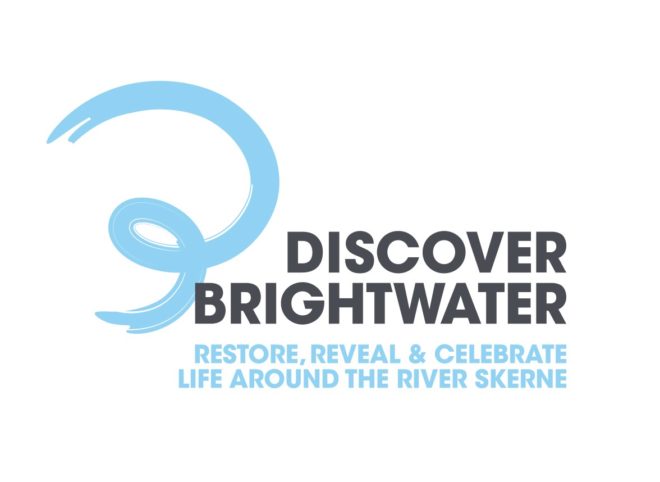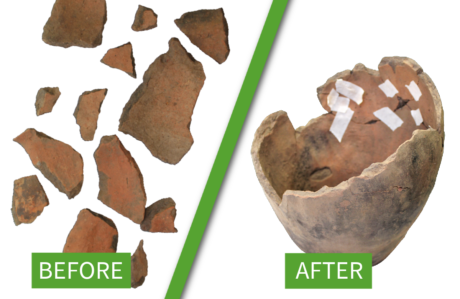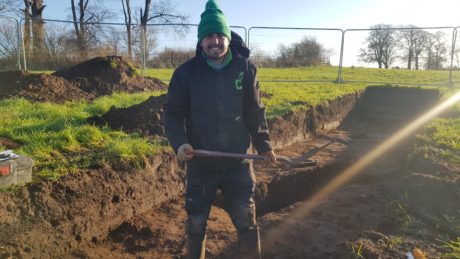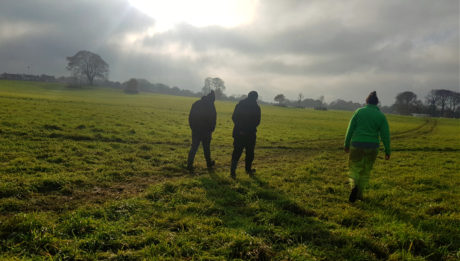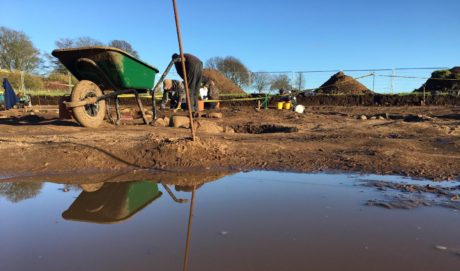
Backfilling is away and it’s time to say goodbye to our trenches at Roman Sedgefield. It’s been an amazing six weeks full of Venturers, archaeology and sheep – but just because we’ve stopped digging doesn’t mean it’s over just yet!
It feels like years ago we pulled up to East Park on a chilly autumnal morning to start prepping our trenches for the work ahead, the past six weeks have certainly kept us busy at DigVentures. We’re not ready to say goodbye yet though.
The great thing about archaeology is that it just keeps going! Now we have finds, plans and records ready to be pondered and analysed for weeks to come. But before we get into, let’s revisit the past for a moment.
We’ve picked a few questions from our lovely ‘Meet the Archaeologists’ livestream yesterday that we think help us to give a nice summary of what we’ve been up to. If you missed the main event, don’t worry, you can catch up here!
Let’s get started, shall we?
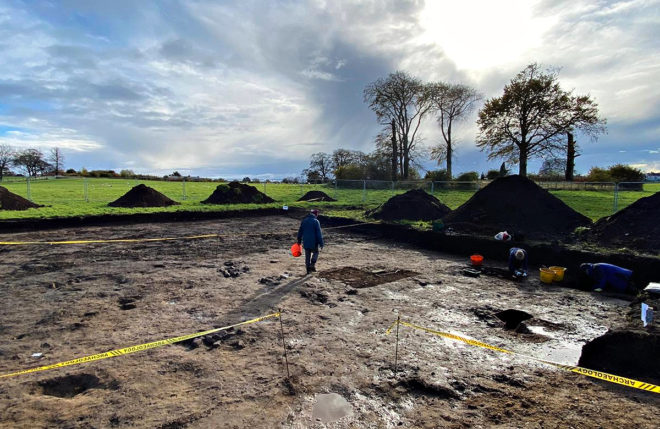
Back to the start: how did we choose where to dig?
This is a question we get quite a lot as archaeologists and considering this is probably one of the most important parts of starting an archaeological investigation, we’ll never get tired answering it!
For this site, we started with a geophysical survey done in East Park a few years ago. We also sat down to consider what exactly we were hoping to achieve here: we wanted to investigate the enclosures (plots of land) – what was in them and what they were for – and the trackways that we could see spanning across this site in that lovely organised way, typical of Roman sites.
We knew there were some previous interventions (excavations) at this site; our own trench from 2019 was to the south and there were several previous digs to the north. This also factored into our chose of location. We noticed there hadn’t been much done in between these two areas, so this seemed like a good place to start.
On top of that, we also noticed there was a lot of information gathered about the insides of these enclosures, but not so much about the ditches that mark them out. Since this would help us understand a bit more about the phasing, or evolution, of the site we definitely wanted to take a look at them.
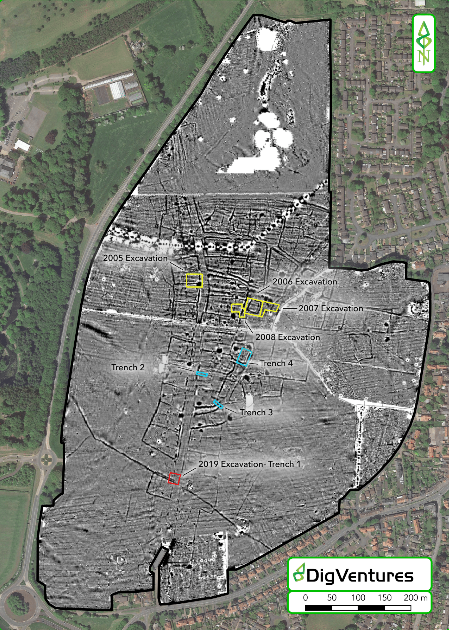
What were our favourite discoveries?
There’s certainly a lot to unpack from this year’s dig at East Park. From bulk finds to small finds to indications of structures we were definitely blessed with an abundance of material. But, what are the highlights?
Nat found that lovely line of postholes in the southern area of the trench. The buildings here seem to be wooden, so other than the ‘packing’ around the postholes, we weren’t expecting to find any worked stone. Regardless, looking at the postholes and considering the kind of pottery we lifted from this area, it looks like we have some sort of non-domestic structure.
Could this be a shop? A trading post? It’s very likely! We’ll keep assessing it in post-excavation analysis using our in-depth records to make extra sure, but it’s definitely got us thinking. More on that later though …
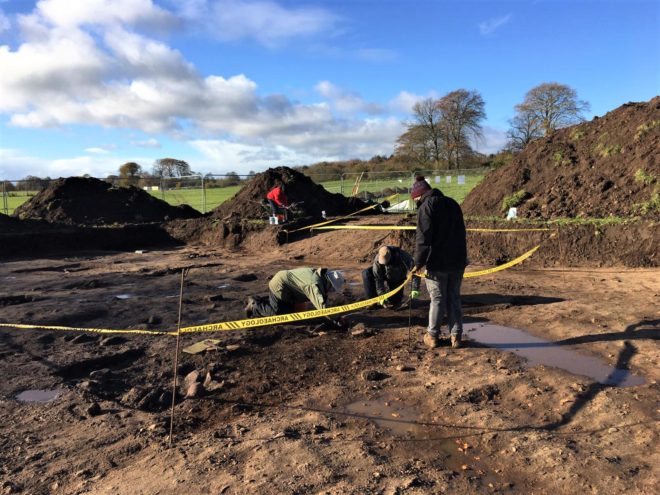
Another great find, though small in size, was the lovely bead uncovered by our Venturer, Bill, in one of the ditches. It stood out immediately because of its dark colour and the hole in the centre. We instantly knew this was no stone. It looks like it’s made of jet and was possible part of a piece of jewellery that someone dropped thousands of years ago. A shame for them, but very lucky for us!
A find like this, so personal in nature, really does help bring to life the residents of Roman Sedgefield, we just hope its owner wasn’t too upset when they lost it.
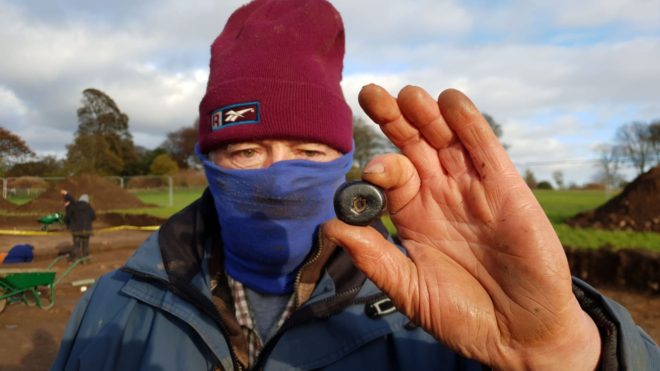
And finally, how could we mention our top finds without bringing up the three lovely Roman vessels that will be the subject of our upcoming livestreamed micro-excavation. All three were found at varying points in the dig, but in close proximity to the structure in the south of the trench.
The first two pots aren’t complete, probably due to plough damage that occurred post-deposition. However, a lovely little bowl-like vessel that David uncovered in the final week is complete and ready to be excavated in closer detail next week. We can’t wait!
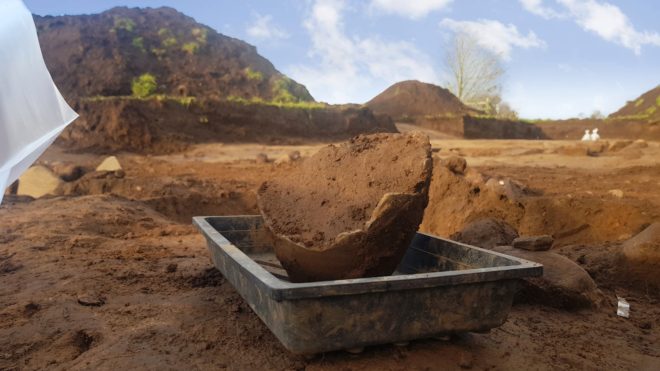
Speaking of pottery, do any have decoration?
Yes, they do! We’ve found lots of great pottery on site, and some appear to have incised decoration. One example would be the Nene Valley hunt cups which have hunting scenes depicted on them. Pretty cool.
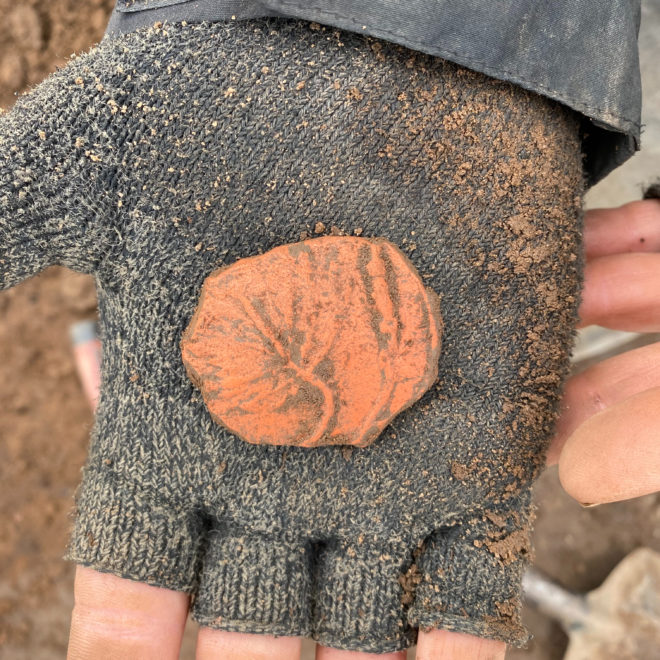
On top of that, David’s vessel seems to have something a little unusual that we’ve not really seen before. We can’t make it what it is exactly, but there’s definitely some sort of design incised into the base. A decorated base is something that not even Nat has seen before, so we’re excited to explore that a bit more later.
If you read last week’s site diary, you’ll also have seen about our lovely potential potter’s mark. If you haven’t, why not give it a cheeky read now!
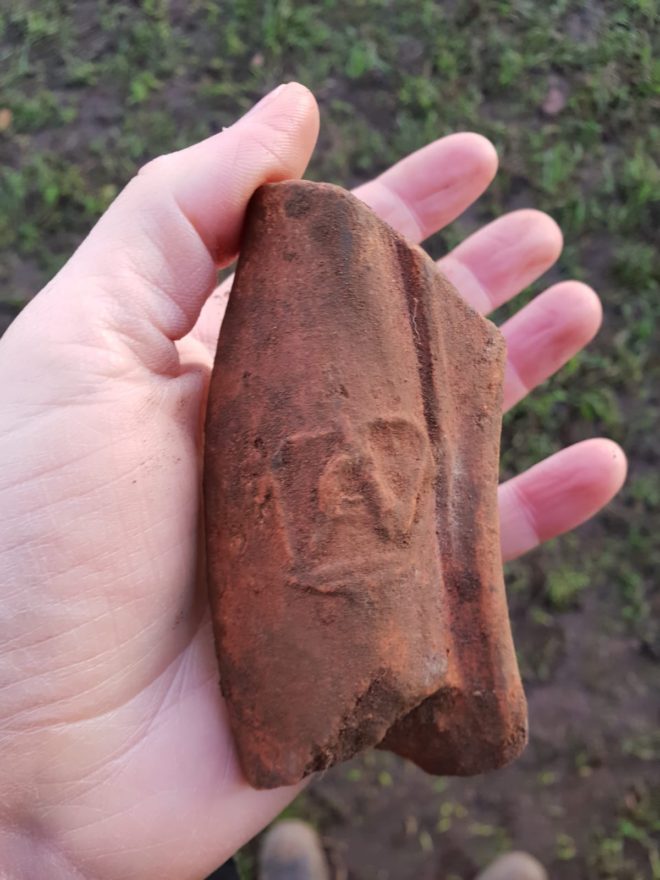
So, have we found any evidence of anything pre-Roman?
No, that we can say at the minute there doesn’t seem to be any material evidence earlier than the late 1st or early 2nd century. There’s none that we know of from any previous investigations either. It seems that all Iron Age settlements in this area went out of use after around 80 AD, probably in response to the Roman occupation.
Spot dating of our pottery suggests we have finds mostly from the mid-2nd to mid-3rd century in date.
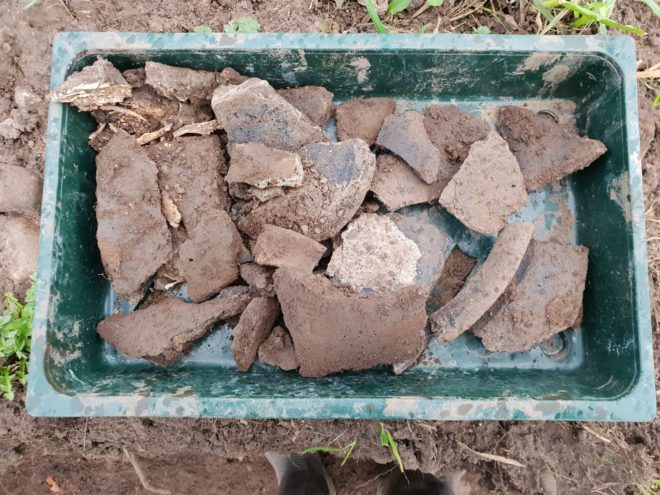
What does this mean for this site? What do we think we have here?
Well, we have something really exciting. By all appearances, it seems we have the largest civilian market town in the North East. Combining our own findings with everything we know of previous investigation here, everything seems to point towards this theory.
Think about market towns today: you have people living there and working there, and others who travel from outlying areas to bring goods to trade or just to have a little shop. Not much has changed over the years, and even our Roman market towns would have been the same.
It’s likely that this settlement might have been a response to one of the most famous Roman structures in Britain: Hadrian’s Wall. When this was built, it created a huge demand for support of its infrastructure, and trading centres would have definitely been needed. Not only that, but our Roman settlement seems to be at a point were a series of ancient trackways appear to be meeting, making it a perfect place for trading with the amount of movement this would generate.
Pretty amazing, right? This site could potentially be of major national importance.

What’s next for East Park?
We still need to continue investigations if we want to support our theory. Archaeology is a wonderful field of study that will always continue to generate new questions and ideas to be challenged. That’s why we love it!
The story of Roman Sedgefield isn’t over yet, and we can’t wait to see what else is found!
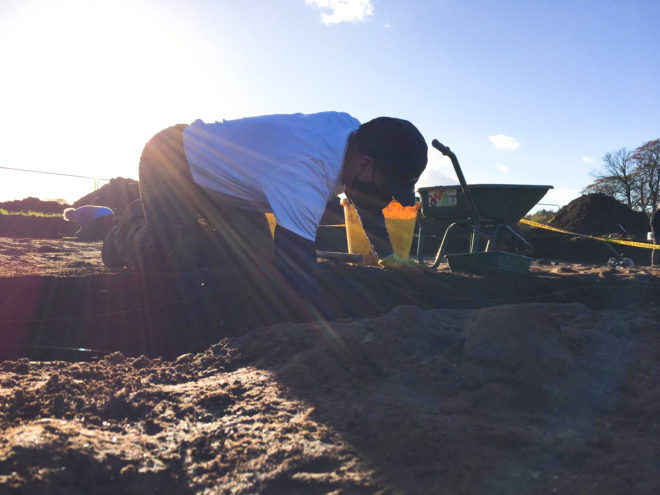
About Discover Brightwater
This dig is part of Discover Brightwater – a huge project which aims to restore, reveal and celebrate life around the River Skerne.
It is supported by the National Lottery Heritage Fund, and the events which focus on the historic environment are the initiative of Durham County Council’s Archaeology Section. As part of the project, DigVentures is organising public participation in events at five different archaeological sites, including East Park, Legs Cross Bolam, and Bishop Middleham. Find out more.
